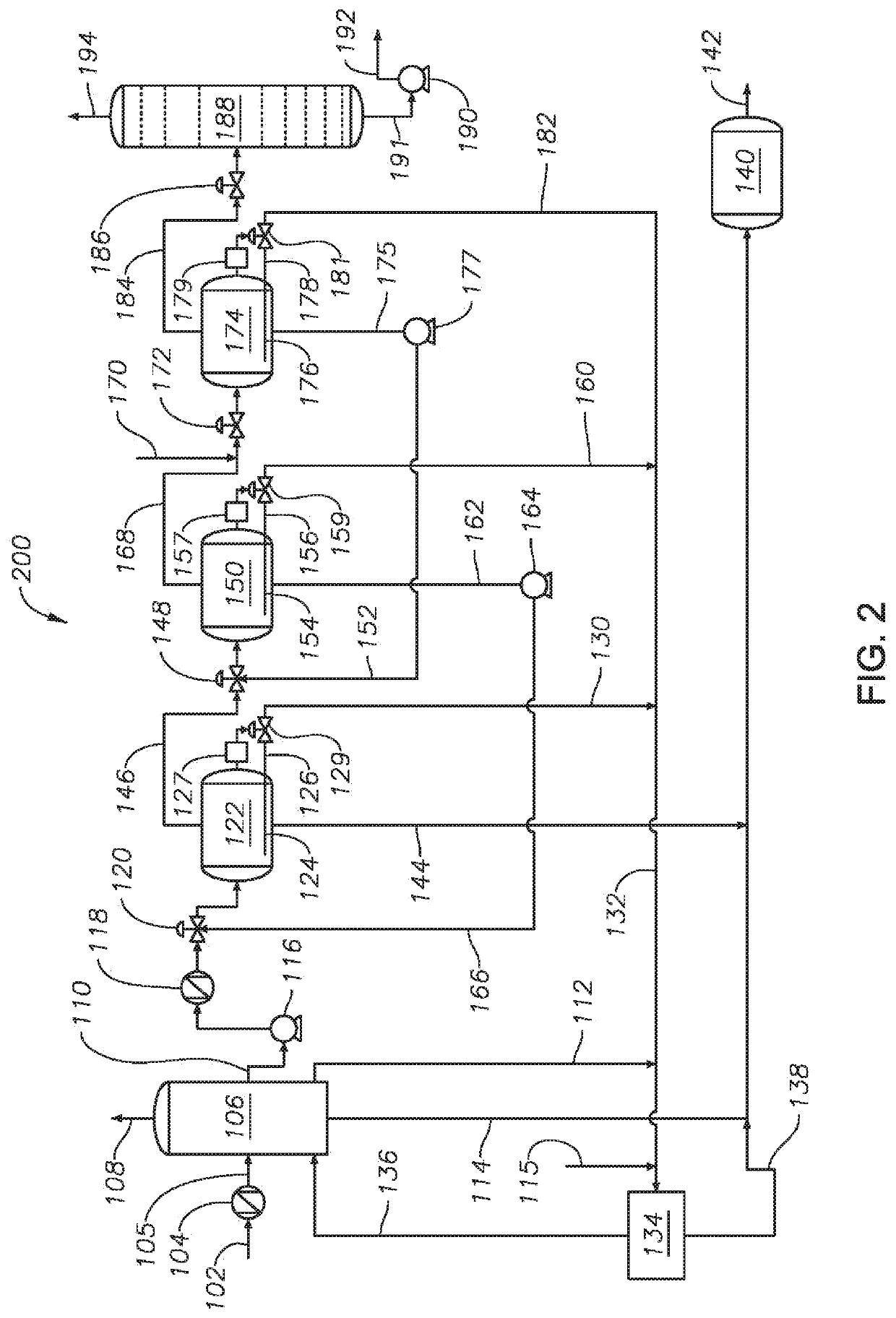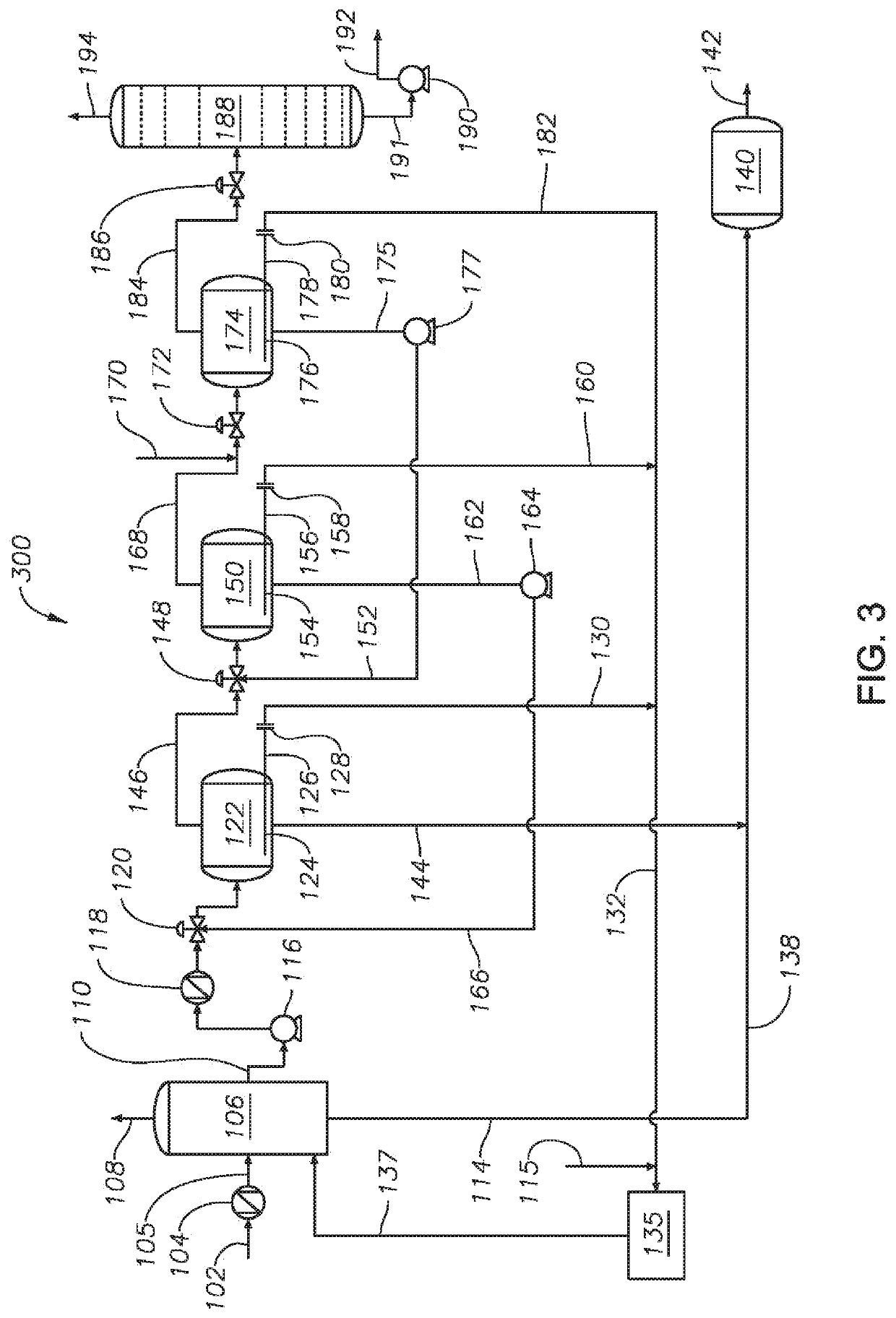Desalting plant systems and methods for enhanced tight emulsion crude oil treatment
a technology of tight emulsion crude oil and desalting plant, which is applied in the direction of water/sludge/sewage treatment, separation processes, chemical instruments and processes, etc., can solve the problems instability and safety hazards, etc., and achieve the reduction of the effect of reducing the risk of transformer short-circuiting and tripping
- Summary
- Abstract
- Description
- Claims
- Application Information
AI Technical Summary
Benefits of technology
Problems solved by technology
Method used
Image
Examples
Embodiment Construction
[0041]So that the manner in which the features and advantages of the embodiments of systems and methods of gas oil separation plants for rag layer treatment, as well as others, which will become apparent, may be understood in more detail, a more particular description of the embodiments of the present disclosure briefly summarized previously may be had by reference to the embodiments thereof, which are illustrated in the appended drawings, which form a part of this specification. It is to be noted, however, that the drawings illustrate only various embodiments of the disclosure and are therefore not to be considered limiting of the present disclosure's scope, as it may include other effective embodiments as well.
[0042]For purposes of the present disclosure, tight emulsion crude oil includes emulsions that occur in medium to heavy crude oils with American Petroleum Institute (API) numbers less than about 29. Crude oil specific gravity, along with API numbers, can be used as a measure...
PUM
| Property | Measurement | Unit |
|---|---|---|
| pressure | aaaaa | aaaaa |
| temperature | aaaaa | aaaaa |
| true vapor pressure | aaaaa | aaaaa |
Abstract
Description
Claims
Application Information
 Login to View More
Login to View More - R&D
- Intellectual Property
- Life Sciences
- Materials
- Tech Scout
- Unparalleled Data Quality
- Higher Quality Content
- 60% Fewer Hallucinations
Browse by: Latest US Patents, China's latest patents, Technical Efficacy Thesaurus, Application Domain, Technology Topic, Popular Technical Reports.
© 2025 PatSnap. All rights reserved.Legal|Privacy policy|Modern Slavery Act Transparency Statement|Sitemap|About US| Contact US: help@patsnap.com



